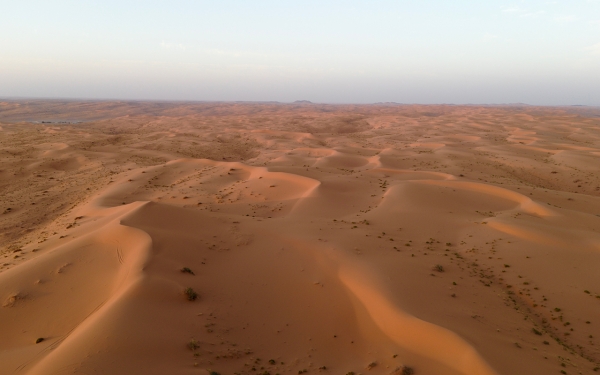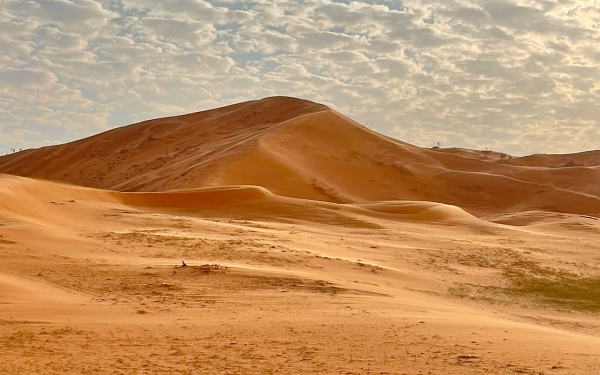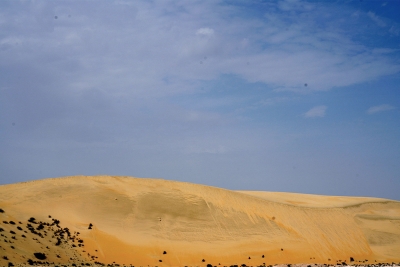

Al Nufud Al Kabirô Desert is the second-largest sand accumulation in the territories of the Kingdom of Saudi Arabia after the Empty Quarter Desert. It covers an area of 65,000 kmôý. It is located in the northern part of the Kingdom and spans across three administrative provinces: Hail, al-Jawf, and Tabuk, accounting for 10.2 percent of the total desert areas in the Kingdom.
Geology of Al Nufud Al Kabir Desert
Along with the Arabian Shield, Al Nufud Al Kabir Desert is one of the features of the Arab shelf, the second component of the Kingdom's geology. It is connected to the Dahana Desert, the third-largest sand desert in the Kingdom. It is located in the eastern and northeastern regions and is connected with the Empty Quarter Desert, the largest uninterrupted desert in the Kingdom.
Al Nufud Al Kabir sands stretch from the edges of the old Najd Region, specifically from al-Zulfi Governorate in Riyadh Province to the northern borders of the Kingdom with Jordan. Because of the wind, the sands of an-Nufud al-Kabir feed the Dahana Desert. Its sands take on a red color, forming crescent-shaped formations and dunes, creating longitudinal, transverse, and pyramidal dunes.
Archaeological sites in Al Nufud Al Kabir Desert
The archaeological site of Jubbah, the fourth Saudi site added to the United Nations Educational, Scientific and Cultural Organization (UNESCO) list of World Heritage Sites in 2015, is located in an-Nufud al-Kabir Desert to the south. It is one of the Kingdom's earliest rock-carving sites, dating back to more than ten thousand years BC.
Al Nufud Al Kabir Desert reserves
Harrat al-Hurra Reserve, in the north of Al Nufud Al Kabir, al-Tabiq Reserve, and al-Khanfa Reserve in the middle of the desert, are the three nature reserves in Al Nufud Al Kabir Desert. A Royal Decree was issued in 2018 to combine the three reserves and the surrounding lands into one royal reserve. It became known as the King Salman Bin Abdulaziz Reserve, which is supervised by the Royal Reserves Council.
Natural vegetation is scarce in Al Nufud Al Kabir Desert, despite the intermittent rainfall in various parts of the year. However, desert shrubs, grasses, and trees like Acacia, Lycium shawii, Tamarisk,ô Tamarix Aucheriana, and Calligonum comosum grow in its protected areas. It also includes the Arabian wolf, the Arabian sand gazelle, the striped hyena, the red fox, gerbils, and hares.
Related quizzes
Related articles


